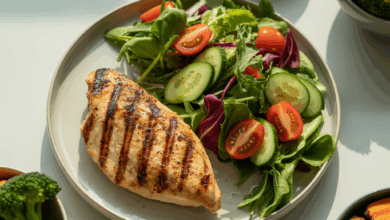How Many Calories Do You Burn In Boxing

Ever finished a boxing class dripping sweat and wondered, “Exactly how many calories did I just burn?” Whether you’re lacing up gloves after work, hitting a heavy bag at the gym, or trying a home boxing workout, knowing how many calories boxing burns helps you plan fat loss, performance goals, and recovery. Let’s break down the numbers, the science, and the best ways to get the most from every round.
How many calories do you burn in boxing: a practical overview
Boxing isn’t a one-size-fits-all calorie burner — intensity, duration, your body weight, and the type of session all matter. On average:
- Light to moderate boxing (shadow boxing, easy bag work): ~300–500 calories per hour
- Moderate to vigorous boxing (circuit classes, steady heavy bag rounds): ~500–700 calories per hour
- High-intensity boxing (sparring, HIIT rounds, intense mitt work): ~700–900+ calories per hour
These are estimates. A heavier person or someone pushing hard will burn more; a lighter person or someone taking it easy will burn fewer calories.
How the math works: METs and a simple formula
Exercise scientists often use METs (metabolic equivalents) to estimate calorie burn. Boxing activities range from about 7 METs (moderate) to 12 METs (very vigorous).
Use this formula to estimate your burn:
Calories/minute = (MET × 3.5 × weight in kg) ÷ 200
Example: A 75 kg (165 lb) person doing vigorous boxing at 10 METs:
Calories/min = (10 × 3.5 × 75) ÷ 200 = 13.125 → ≈ 788 calories/hour
That helps explain why two people in the same class can see different calorie numbers on their trackers.
Factors that affect calorie burn in boxing
1. Intensity and workout structure
Rounds of explosive punching, burpees between rounds, or partner drills increase heart rate and calorie burn compared with steady shadowboxing.
2. Your body composition and weight
Muscle mass and total body weight influence energy needs. More mass = more calories burned to move that mass.
3. Skill level and efficiency
Beginners may burn more calories learning technique because of inefficiency, while advanced fighters can sustain higher intensities longer.
4. Rest periods and class format
Long rests lower average heart rate and total calories. HIIT-style boxing (short intense bursts + short rests) maximizes burn and afterburn.
Sample calorie calculations by session
- 30-minute beginner shadowboxing (moderate, 7 METs) for a 68 kg (150 lb) person: ≈ 250 calories
- 45-minute heavy bag workout (vigorous, 9 METs) for an 80 kg (176 lb) person: ≈ 475 calories
- 60-minute sparring + drills (very vigorous, 11 METs) for a 90 kg (198 lb) person: ≈ 1,045 calories
These examples are illustrative — use the MET formula with your weight and estimated intensity for a personalized estimate.
Boxing workout variations to try (and their calorie impact)
Shadowboxing (at home)
Low equipment, great for technique, mobility, and warm-ups. Pair 3-minute rounds with 30 seconds of bodyweight moves to boost intensity.
Heavy bag sessions
Heavy bag rounds simulate power and endurance work. Use 2–3 minute rounds with 30–60 seconds rest; that’s ideal for steady calorie burn.
Pad work / mitts with a coach
Dynamic and reactive — higher intensity and calorie burn because of rapid combinations and footwork.
Boxing HIIT circuits
Combine punching rounds with burpees, jump rope, and core moves. HIIT maximizes calories during and after the workout (EPOC effect).
Sparring
High-skill, high-intensity. Sparring sessions typically burn the most calories but require recovery and careful progression.
Tips to maximize calorie burn and keep progress sustainable
- Mix high-intensity rounds with technique-focused rounds to improve skill and increase overall output.
- Prioritize compound strength training 2× per week to build muscle — lean mass raises resting metabolic rate.
- Fuel workouts with a balanced pre-workout snack (carbs + protein) and prioritize post-workout protein for recovery.
- Track sessions with a heart-rate monitor or fitness watch for better estimates; compare trends week-to-week.
- Get 7–9 hours of sleep and manage stress — these influence appetite, recovery, and how many calories you’ll burn overall.
Real-world example: Sam’s 8-week calorie and fitness plan
Sam, 34, 78 kg (172 lb), wanted fat loss and better conditioning. He did 3 boxing workouts/week: 2 heavy bag + technique sessions and 1 HIIT boxing class, plus 2 strength sessions. After 8 weeks, Sam reported higher endurance, a slight drop in body fat, and an average of 450–650 calories burned per boxing workout depending on intensity. Tracking calories helped him adjust food intake so weight loss was sustainable rather than extreme.
Nutrition and recovery: the other half of the equation
To support intense boxing training and fat loss:
- Eat a slight calorie deficit (if weight loss is the goal) but not so low that performance or recovery suffers.
- Prioritize lean protein, whole grains, healthy fats, and veggies to fuel workouts and repair muscle.
- Hydrate before, during, and after sessions — dehydration lowers performance and perceived calorie burn.
Check our nutrition guides and workout routines for meal plans and program ideas tailored to boxing training.
Frequently Asked Questions
How many calories does boxing burn per hour?
It varies by intensity and body weight, but most people burn between 400–900 calories per hour — lower for light sessions, higher for intense sparring or HIIT formats.
Does shadow boxing burn calories?
Yes. Shadow boxing burns calories and improves technique and mobility. Adding speed, footwork, and bodyweight exercises between rounds increases total calorie burn.
Can boxing alone help me lose weight?
Boxing can be a very effective component of a weight-loss plan because it combines cardio, explosiveness, and calorie burn. Pair it with a sensible nutrition plan and strength training for the best, sustainable results.
Conclusion: Take action and make boxing work for your goals
So, how many calories do you burn in boxing? The honest answer is: it depends — but it’s substantial when you train with intent. Use MET-based estimates or heart-rate tracking to personalize numbers, switch up session types for variety, and combine training with smart nutrition and recovery. Ready to start? Try a 30–45 minute mix of shadowboxing, heavy bag rounds, and core work this week, log your session, and adjust intensity each week to keep improving.
Want more guidance? Explore our workout routines for beginner-to-advanced boxing plans and our wellness tips for recovery and sleep strategies. Lace up, show up, and let the results follow.
Call to action: Try one of the suggested sessions this week, track your calories and how you feel, and come back to compare notes — or drop a comment to tell us which workout you tried and what your burn was!





